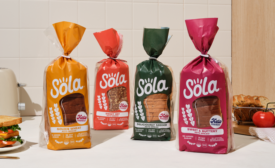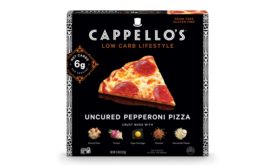Home » Keywords: » low-carb
Items Tagged with 'low-carb'
ARTICLES
The low-carb producer has partnered with the Grammy-winning DJ on its new flavor.
Read More
Zero Carb Company forges alliance with Grupo Bimbo
The gluten-free bread startup and global bakery producer will work on low-carb products.
July 12, 2023
BetterBrand introduces The Better Bun low-carb, high-protein bakery product
The item offers consumers a better-for-you alternative to a traditional sandwich bun.
June 27, 2023
BetterBrand expands its Better Bagel product offerings with two flavors
The producer has introduced The Pretzel and The Sesame flavors to the low-carb line.
June 14, 2023
BetterBrand’s low-carb Better Bagel attracts retailer, investor attention
The bakery product has the same amount of net carbs as two banana slices.
February 22, 2023
Sola unveils new bakery formulations, packaging, and logo
The bakery brand has tweaked its line of low-carb products, inside and out.
February 22, 2023
2022’s greatest hits: the 15 most-viewed articles of the year
Stories about new products, challenges, and trends resonated with SF&WB readers.
December 29, 2022
Cappello's introduces Low Carb Lifestyle Uncured Pepperoni Pizza
Crust includes turnips, almond flour, cage-free eggs, flaxseed, mozzarella.
October 19, 2022
BetterBrands expands into U.S. retail stores
Brand transforms carb-heavy foods into low-carb.
October 11, 2022
Get our new eMagazine delivered to your inbox every month.
Stay in the know on the latest snack and bakery industry trends.
SUBSCRIBE TODAY!Copyright ©2024. All Rights Reserved BNP Media.
Design, CMS, Hosting & Web Development :: ePublishing










